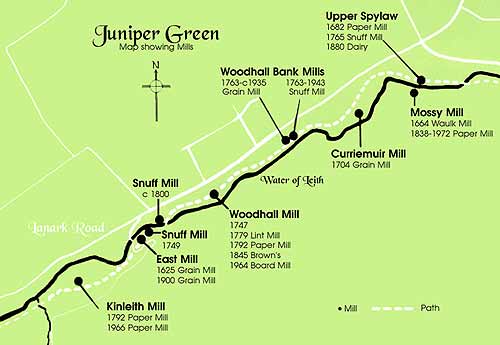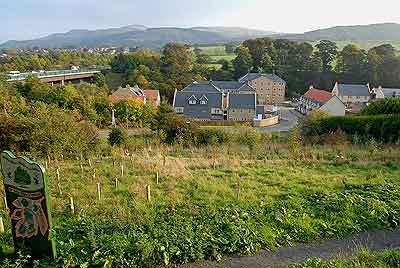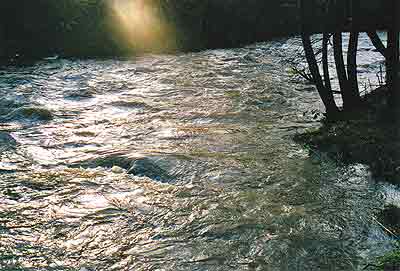The Mills of Juniper Green
The Great Ice Age was good to Juniper Green!
The Great Ice Age covered the land in ice a mile thick. When the climate began to ameliorate about fifteen thousand years ago, the ice sheet started to thaw and gradually the meltwaters dripped round the hard volcanic rock of the Pentland Hills. In only a few thousand warmer years, the drips had turned to streams and then to torrents as the water gushed down from the wetlands in the west, following the contours of the hills above low-lying glaciers, guided in places by a faultline geologists call the Colinton Fault.
Sometimes, when the icepack caused the sea level to drop, the waters tumbled with even more force to the lowered coastline, carving out the narrow, steep gorge through which the river, now known as the Water of Leith, continues to rush. In its upper reaches at least, the river does not meander lazily, drifting off into quiet pools and eddies: it charges with great force, crashing against hard rocky cliffs and abruptly twisting to and fro in its haste to the sea.
Water Mills Sprung Up!
This would have been, literally, a total waste of energy if man, calvinistically despairing of such prodigality, had not decided to harness the river's renewable power for his own use. He (or more likely she) realised that grinding grain by hand-quern was unnecessarily inefficient, and so worked out a method of capturing the force, not only for producing flour, but for other tasks too time-wasting and back-breaking even for a horse. Thus, watermills sprang up all along the river. Robert Louis Stevenson's grandfather tells us that in 1845 "The Water of Leith is a most serviceable drudge, and is by no means spared" and that in the parish of Colinton, which then included Juniper Green, there were sixteen mills altogether, and a seventeenth was under construction. RLS put it (marginally) more poetically:
Here is the mill with the humming of thunder,
Here is the weir with the wonder of foam,
Here is the sluice with the race running under.
Marvellous places, though handy to home.
In 1791, 76 watermills were counted along the whole length of the Water of Leith; and archaeologists have found traces of 80 - that's an average of three and a half per mile from source to sea. Along the Juniper Green stretch of the river there was a concentration of watermills: seven in Juniper Green proper, and at least ten in which Juniper folk would have worked.

Map of the mills on the Juniper Green stretch of the Water of Leith. Adapted, with permission, by Rab and Della Purves, from John Tweedie's book entitled A Water of Leith Walk


